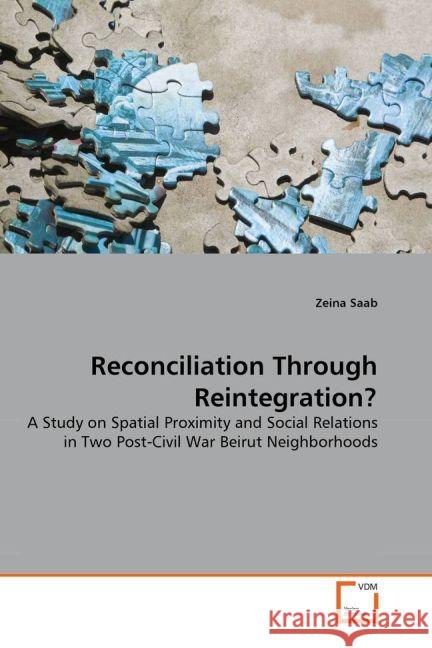Reconciliation Through Reintegration? : A Study on Spatial Proximity and Social Relations in Two Post-Civil War Beirut Neighborhoods » książka
Reconciliation Through Reintegration? : A Study on Spatial Proximity and Social Relations in Two Post-Civil War Beirut Neighborhoods
ISBN-13: 9783639378542 / Angielski / Miękka / 2011 / 216 str.
Reconciliation Through Reintegration? : A Study on Spatial Proximity and Social Relations in Two Post-Civil War Beirut Neighborhoods
ISBN-13: 9783639378542 / Angielski / Miękka / 2011 / 216 str.
(netto: 335,75 VAT: 5%)
Najniższa cena z 30 dni: 352,54
ok. 10-14 dni roboczych
Dostawa w 2026 r.
Darmowa dostawa!
Although the Lebanese Civil War ended in 1991 and Beirut became a reunified city, much of it remains divided between a Christian East and a Muslim West. Beyond certain parts of the capital, many of its neighborhoods remain almost entirely religiously homogeneous. This study takes an in-depth look at two neighborhoods undergoing sectarian integration, and highlights the reasons residents have chosen to reside in non-co-religious settings. It also analyzes to what extent and under what conditions spatial proximity can lead to social relations between non-co-religionists. While residents revealed many reasons for living in a non-co- religious area, other factors such as a neutral living environment with low territoriality may also facilitate integration. Alternatively, the presence of polarizing religious and political images and symbols may act as barriers to entry. With rising real estate prices, more families may be forced to live in non-co-religious and polarizing neighborhoods, which may introduce tension and instability. This study will be useful to students, academics, civil society leaders, and policy makers interested in post-conflict planning.











